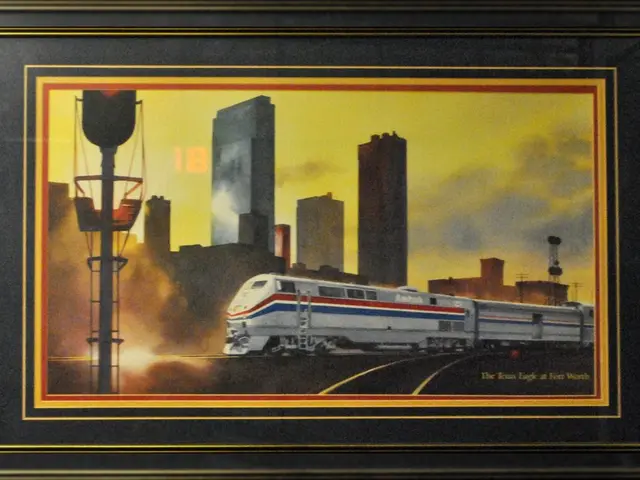Impact of Museums on Art and Society
In a world where tradition and innovation intertwine, the arts and cultural sector plays a pivotal role in preserving, promoting, and advocating for intangible cultural heritage (ICH). This sector, encompassing museums, galleries, and cultural centers, serves as a beacon for traditional music, dance, storytelling, and more, ensuring these practices remain vibrant and relevant.
One of the key ways the arts and cultural sector achieves this is through building partnerships and community engagement. By collaborating directly with tradition bearers and communities, cultural organizations document, support, and sustain living heritage practices. For instance, projects in Scotland foster partnerships between ICH practitioners and heritage venues, ensuring that traditional arts remain a vital part of society [1].
Another crucial aspect is documentation and inventory creation. Arts and cultural institutions collect information about ICH practices, creating inventories or archives that safeguard knowledge for future generations [1][3]. This meticulous work ensures that the rich tapestry of traditional music, dance, and storytelling is not lost to the sands of time.
Skills transmission and training are also essential. The sector organizes training programs, workshops, and educational efforts to pass on traditional skills to younger generations, preserving craftsmanship and performative arts [3][4]. This intergenerational exchange ensures that these practices continue to thrive and evolve.
Digital preservation and dissemination further expand accessibility to intangible heritage. Digitization and online platforms allow the wider public to experience and learn about traditional forms, while also supporting artisans and performers [3]. This digital revolution has made it possible for people across the globe to appreciate and engage with ICH in ways previously unimaginable.
Exhibitions and cultural programming in museums, libraries, and cultural centers promote appreciation of ICH through events and performances that highlight traditional arts and oral traditions [1][5]. These platforms provide a stage for these practices to be showcased, celebrated, and enjoyed by all.
Policy frameworks and funding support from government and cultural bodies are crucial in protecting and promoting ICH. These may include cultural centers, national missions on manuscripts, and cultural mapping initiatives [2]. Such initiatives provide the necessary resources and recognition for ICH to flourish.
Educational integration is another essential aspect. Programs develop teaching resources and curricula to integrate living heritage into formal and non-formal education, fostering awareness and respect from early childhood through technical and vocational education [4]. By embedding ICH into the educational system, a new generation is raised with a deep appreciation and understanding of their cultural roots.
Overall, the arts and cultural sector acts as a facilitator, educator, and advocate, ensuring that traditional music, dance, storytelling, and other ICH forms are recognized, practiced, and passed on within communities and to wider audiences [1][3][4][5]. Museums, in particular, play a crucial role in this mission, serving as custodians of historical artifacts, documents, and artworks, while also stimulating local economies, providing spaces for education and inspiration, and fostering dialogue and understanding among different communities.
- The love for interior design intertwines with the preservation of cultural heritage, evident in museums and cultural centers.
- Cooking lessons on traditional recipes are a way to promote food-and-drink knowledge and sustain lifestyle traditions.
- Fashion-and-beauty can trace its roots to historical trends, as seen in the exhibition of ancient garments and cosmetics.
- Home-and-garden hobbies often include sustainable-living practices, such as growing indigenous plants or using repurposed materials.
- Home-improvement projects can showcase traditional craftsmanship, like restoring antique furniture or using traditional building techniques.
- Thematic cooking shows, online platforms, and self-help books are part of the food-and-drink section, offering recipes for aspiring chefs looking to learn new skills.
- Mindfulness practices, such as yoga and meditation, have deep roots in Asian cultures, illustrating the interconnection between personal-growth and intangible cultural heritage.
- Productivity techniques often incorporate mindfulness and goal-setting, emphasizing the importance of lifelong-learning and skills-training.
- Career development can be guided by education-and-self-development resources, like job-search platforms, online courses, and learning communities.
- Travel blogs often feature cultural experiences, showcasing intangible cultural heritage from various destinations and fostering appreciation for traditional lifestyles.
- Sports analysis can dissect the origins of games like basketball, including NBA, NCAA Basketball, and the WNBA, adding richness to their appreciation.
- Weather forecasting is an essential aspect of travel planning, considering weather's impact on sports events and travel locations.
- Learning about sports history, like the evolution of basketball, can inspire stories and screenplays in film and television, contributing to the cultural sector.
- Gardening as a hobby fosters a connection with nature, aligning with sustainable-living principles and promoting mindfulness.
- Nurturing the car as an extension of personal identity involves the appreciation and application of design, style, and craftsmanship— all elements of intangible cultural heritage.




